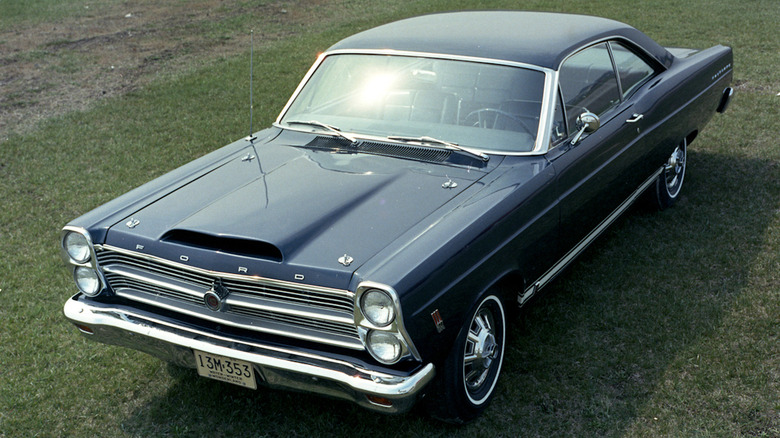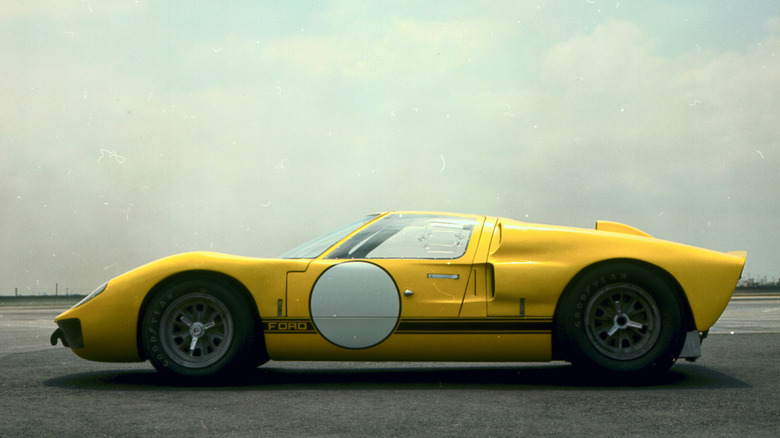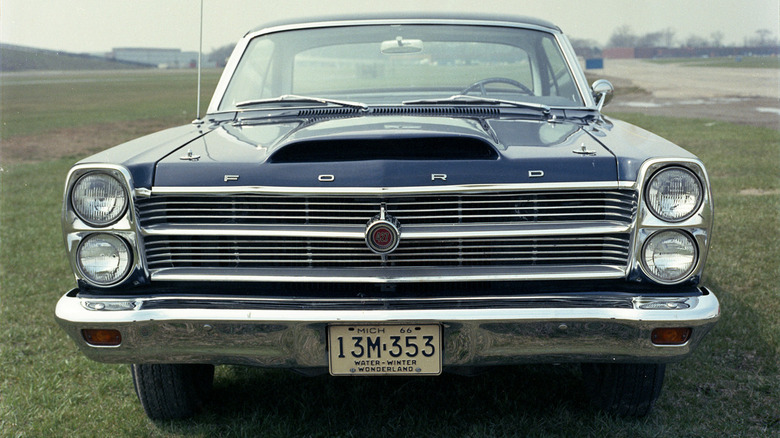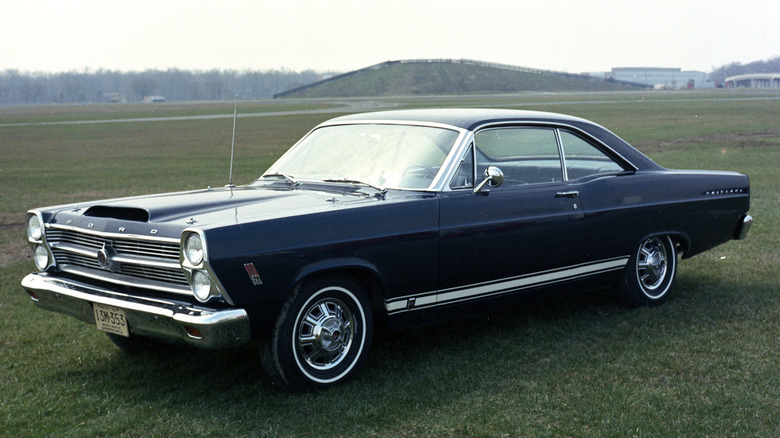What Makes The Ford Fairlane 427 One Of The Rarest Classic Muscle Cars Ever Built
The horsepower wars were in full swing by 1966, and Chrysler had just released its NASCAR-derived street HEMI engine. As a follow-up to its dedicated drag racing 1964 Thunderbolt, Ford responded with a daily-drivable, very limited edition vehicle that became a muscle car legend upon its release. The Ford Fairlane 427 was Ford's entry into the growing market for high-powered, lightweight cars that you could drive to work during the week — and then dominate the drag strip on Sundays. Enthusiasts were ready to buy street-legal cars that could race right off the showroom floor without any modifications. Detroit was happy to oblige their competitive urges with a wide range of fast-accelerating muscle cars.
The Ford Fairlane 427's recipe for success was simple — stuff the largest engine with the most horsepower into the lightest-weight version of one of your most popular vehicles. The Fairlane 427 achieved both of these goals, and in the process sealed its legacy as a drag strip champion that could take on the HEMIs and win.
The Ford Fairlane 427's engine was racing royalty
The V8 engine in the Ford Fairlane 427 was adapted from Ford's NASCAR and LeMans engine, also known as the "side-oiler." It got this name from an extra oil passage that ran along the left side of the engine block that directed the oil to the crankshaft first, after which it flowed to the camshaft and the valve train. This kept the 427 engine happy at high RPMs all day, as evidenced by the 1967 24 Hours of Le Mans victory, achieved by Dan Gurney and A.J. Foyt in their Ford GT40 Mk IV.
As used in the Fairlane 427, the "R-code" 427 has a 4.232" bore and a 3.784" stroke, for a displacement of 425.8 cubic inches. It was rated at 425 horsepower and a massive 480 pound-feet of torque. The 427 engine came with dual 4-barrel Holley carburetors on a medium-rise intake manifold, which required a special fiberglass hood with an integral air scoop for clearance. The compression ratio was 10.5:1, with forged pistons, a hot cam, and special cast-iron exhaust manifolds that fed into 2 1/4" exhausts and mufflers that had their baffles removed for improved flow.
The Ford Fairlane 427's engine was not a standalone option. It came as part of the "427-8V CID Engine Race Car Package," which also included a Toploader 4-speed manual transmission that could handle the 427's huge torque. No automatic transmission was offered, unlike the HEMI. The package also included Ford's extremely strong 9-inch rear end, which included 3.89:1 gearing and an open differential.
Weight savings meant significant changes for the Fairlane 427
Ford was as serious about keeping the Ford Fairlane 427's weight down as it was about maximizing its horsepower. In its first year, 1966, the 427 engine was only available in the base Fairlane 500 body, which was not the Fairlane's sportiest trim. But it was the lighter version, so Ford went with it. It was available only in Wimbledon White with a bench seat in front, and painted steel wheels with dog-dish hubcaps. Except for those "427" badges on the front fenders and the special hood, the Ford Fairlane 427 looked totally unassuming. Air conditioning, power steering, and power brakes were not available, although the front brakes were discs. Ford made sure that only qualified drag racers were able to purchase a Fairlane 427.
The 1966 Ford Fairlane 427 is exceedingly rare, with only 57 examples produced — the NHRA required 50 examples to be built for racing purposes. This was supposedly due to a problem with the manufacturing of the unique and extremely complex cast-iron exhaust manifolds. Then there was the price — the 427 Race Car Package was a $1,725.20 upcharge on top of the Fairlane 500 Coupe's base price of $2,378.40. That's a 72% premium for the monster motor.
For 1967, there were two different Fairlane 427s
For 1967, the Ford Fairlane 427's final year, Ford also allowed the R-code 427 to be ordered in the more upscale Fairlane XL model. You could now get additional colors, power brakes, a new steel hood modified to clear the carburetors, and bucket seats (on the XL model). Ford also added a new version of the 427 engine — the W-code 427 — which was a slightly detuned version of the original fire-breathing R-code mill. The W-code Fairlane 427 had a single 4-barrel carburetor and an output of 410 horsepower, 15 less than the R-code engine.
A total of 229 Fairlane 427s of both types were made in 1967, of which 72 were the fancier 500XL models. There were also 60 more 427 engine packages installed in the Fairlane's sibling vehicle, the Mercury Comet. The rarity and exceptional performance of the Ford Fairlane 427 have combined to make it a very desirable vehicle for collectors. Recent auction prices have ranged from $200,000 to $296,000 for this unique piece of Ford muscle car history.



